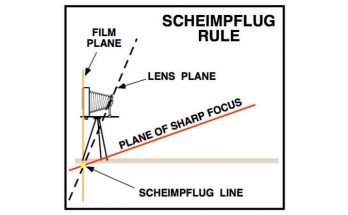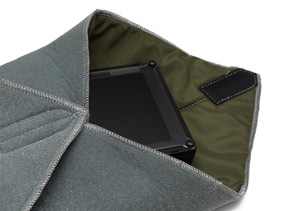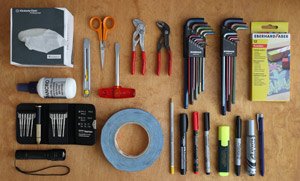
Even though we might not often think about it here at Lens Notes, sound is an integral part of filmmaking, and sooner or later you need to look into it. Sure, large productions get dedicated sound people, freeing us camera geeks of any sonic responsibility, but alas, life’s not always made of large productions.
If you’ve never had to think about sound as a filmmaker/videographer, the truth is it’s not as simple as it looks. First time you try to film an interview, a documentary or even just a casual vlog, you’ll quickly run into the limitations of your camera’s internal microphone/s (provided it even has one to begin with).
Because the built-in microphone is indeed built into the body of the camera, it’s bound to pick up all the noises the camera makes in operation – button clicks, focus motor, stabilisation and others you didn’t even know about. There’s no way around it, especially in today’s ever-shrinking cameras. In reality, despite being incredibly important, sound continues to be a bit of an afterthought in most cameras.
So, you want to improve the sound of your videos, but don’t know where to start from? Luckily, the good people at Hollyland gave us a nudge in the right direction, by sending us a LARK MAX Duo kit to check out. Let’s see what it can do!
What is it?
The Hollyland LARK MAX Duo is an all-in-one wireless lavalier microphone system, consisting of two transmitter microphones and a receiver, all housed in a very neat charger case. The receiver plugs into your device of choice (camera, smartphone or a dedicated sound recorder if you’re so inclined), while the microphones can be attached to actors, presenters or simply placed within the scene to record ambience.
Once you’ve rigged the transmitters, you control the whole thing through the touch screen menu system on the receiver. This includes toggling the built-in recorders in each transmitter, enabling/disabling noise reduction and, of course, controlling gain. Everything operates wirelessly on the 2.4Ghz band, and both the transmitters and the receiver have very pretty decent battery life (±7.5hrs for the transmitters, ±9hrs for the receiver), so you can be sure they’ll last the whole shoot.
The kit is mainly targeted at content producers, such as videographers, vloggers and podcast creators, but it will be just as home on an indie film set. Furthermore, because of the flexibility of the LARK in terms of connectivity, it can be used in any application needing high quality wireless microphones – presentations, conference calls, acting self tapes, the list is endless. Because each microphone also features a built-in recorder, you can even use them on their own as basic, stand-alone tape recorders, for example to record lectures or make voice memos.

Unboxing
First impressions are very important, and the LARK MAX does not disappoint in this department. The kit comes in a nice black clamshell cardboard box with magnetic closure, compact yet pretty decently padded to survive any potential shipping mishaps.
Inside you find a well protected zippered storage case containing the charger box with the two microphones and the receiver. The storage case comes with a mesh pouch housing the various cables and accessories the unit ships with. There’s also a quick start guide as well as a packing list.

Apart from the main components listed above, the unit comes with the following accessories:
- USB C to USB A Cable – for charing and downloading recordings from the microphones
- 3.5mm TRS to 3.5mm TRS Cable – to connect receiver to a camera with a 3.5mm microphone input
- USB C (Right angle) to USB C Cable – to connect to USB C devices, can also be used for charging
- USB C (Right angle) to Lightning Cable – for connection to Apple devices with Lightning port
- Two magnets to secure the lavs to clothing
- Two furry windshields
The LARK MAX comes in two versions – the Duo and the Solo, respectively with one or two microphones. Apart from that, the units and functionality are exactly the same. Here we’ll be looking at the Duo version with two microphones.

First impressions
All parts of the kit feel very high quality, with nice textures, precise fit and pleasant tactile feedback. The two transmitters, the receiver and the bottom half of the charger box have a pleasant soft-touch textured rubber coating, and feel very solid, yet not too heavy.
The storage case also has a nice textured finish (not the same as the transmitters and the receiver though) and feels sturdy and protective. Combined with the charger case, the microphones and receiver are so well protected I’d not worry about them in any but the harshest conditions a shoot can throw at you.
The kit comes charged, so you can start playing with it straight away. No charger is included, but it should be easy enough sourcing one. All cables and accessories are equally well made and inspire confidence in the kit. No complaints here.

Transmitters
As this is a microphone system, let’s start by looking at it’s most important components – the microphones themselves. They are pretty compact, measuring approx. 48.5mm x 30.3mm x 19.37mm (or 1.9″ x 1.2″ x 0.76″) or slightly larger than a matchbox. They are pretty light too, weighing 33 grams (or 1.16oz), although they feel very solid and well made in the hand.
On top you can see the microphone grille, while the bottom features contacts for charging when the transmitter is nested into the charger box. As mentioned above, the rest of the transmitter’s body is covered with a matt black, textured, non-slip coating. Apart from the Hollyland logo, the front features just a single status LED.
On the left side there’s a REC button that triggers the internal recorder, as well as a status led that shines red when the transmitter is recording. On the right, there’s an external microphone input (3.5mm mono jack), a power button and a combined pairing/noise cancellation button.
As expected, the back has a sturdy, metal clip with a pretty good grip, we measured it’s bite at just under 2 centimetres, so you’ll have no trouble attaching it to even the bulkiest of coats or belts. Each transmitter also comes with a pretty strong magnet attached to its clip. These work well through thinner fabric such as a T-shirt, but not with thicker stuff like padded jackets of thick fleece tops.

Receiver
The receiver is also pretty compact, measuring 58mm x 40.83mm x 23.17mm (2.3″ x 1.6″ x 0.9″) and weighing in at roughly 60 grams (2.1oz). There’s a lot of features packed in this tiny package.
The top panel of the receiver features the user interface – a full-colour AMOLED touch-screen, a touch home button on the right and a rotating knob on the left. On the left side of the receiver you’ll find a line out port (3.5mm stereo jack) and a combination power/lock button. On the right side are the headphone jack (3.5mm stereo) and a USB C port.
Like on the transmitters , on the bottom there’s only the connectors for the charger box. Finally, on the back there’s a metal clip to allow you to clip it anywhere you need. As on other devices of this type, the clips (on both the receiver and the transmitters) are designed to fit into a hot shoe, allowing you to easily mount them to a camera, cage or other rigging accessories.
In use
We tested the kit in various conditions, and to put a long story short, it performed flawlessly. We connected the receiver to all the devices you’d typically use with a system like this – both Apple and Android mobiles, DSLRs and compact cameras. We even went as far as hooking it up to one of our ARRI Alexa Minis. Each time the connection was straightforward and reliable, and sound quality excellent.
Workflow
Even though the LARK MAX is quite feature packed, it is surprisingly easy to use straight out of the box. Our kit arrived all ready to use, charged and with the transmitters already paired to the receiver, but should you need to, pairing takes just a press of a button and takes seconds.
The exact workflow you’ll get with this kit is largely dependent on the device you’ll be pumping the sound into. The microphone system tries its best to stay out of your way, with discreet indicators and a straightforward menu system.
As with image capture, when recording sound your primary objective is to get as much information in as possible, so that you can then fine tune and adjust it to your taste in post.

Sound quality
We found the quality delivered by the microphones in the transmitters rich, detailed and warm, with full body and balanced curve. Vocals should be the primary application for this type of microphone, and it certainly excels in delivering very compelling, life-like results. However, we were pleasantly surprised by the versatility of the mics – from recording general ambience in a cafe, to picking up a detailed track of a motorcycle engine, they took everything we threw at them with grace and capability.
Hollyland employ something called the MaxTimbre technology – “…a multilayer membrane microphone design that optimizes voice recording for crisp, clear results.” They’ve also redesigned the sound cavity of the device to enhance the pickup range of the microphone. Furthermore, the mics boast a 70dB SNR (signal to noise ratio), and a maximum sound pressure lever (SPL) of 128dB to ensure audio is free form clipping and distortion in even the harshest of conditions.
We also found the included windshields very effective and pleasantly well designed in terms of attachment. Unlike other designs out there, when you snap the LARK MAX windshields on, you know they’re not going to fall off in the middle of the interview.




